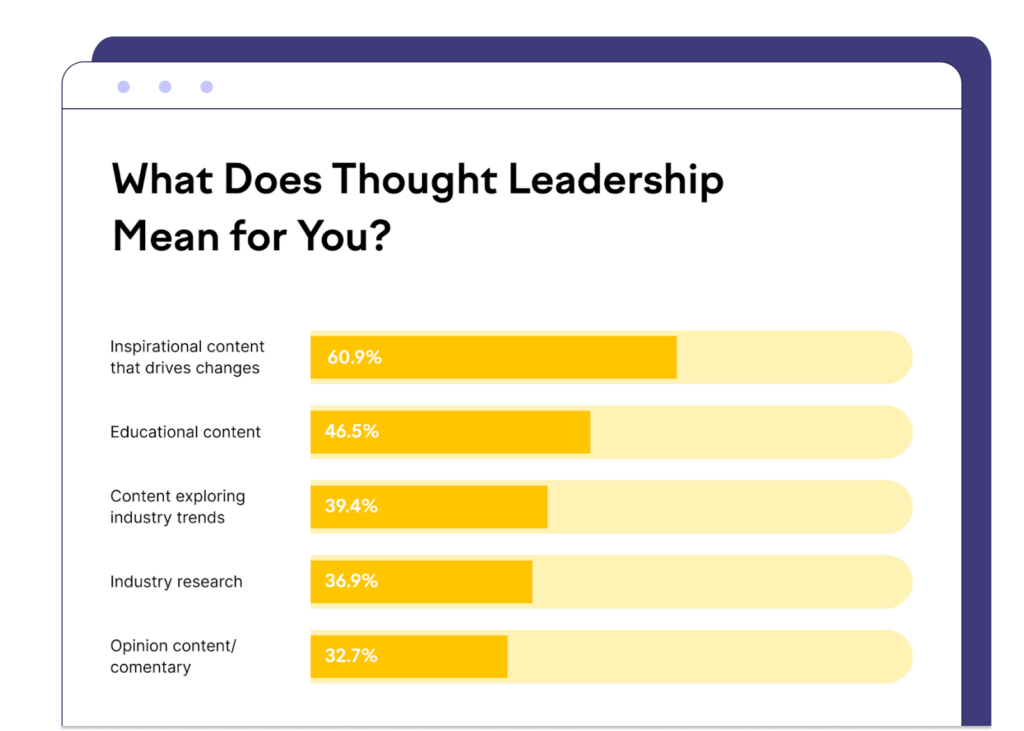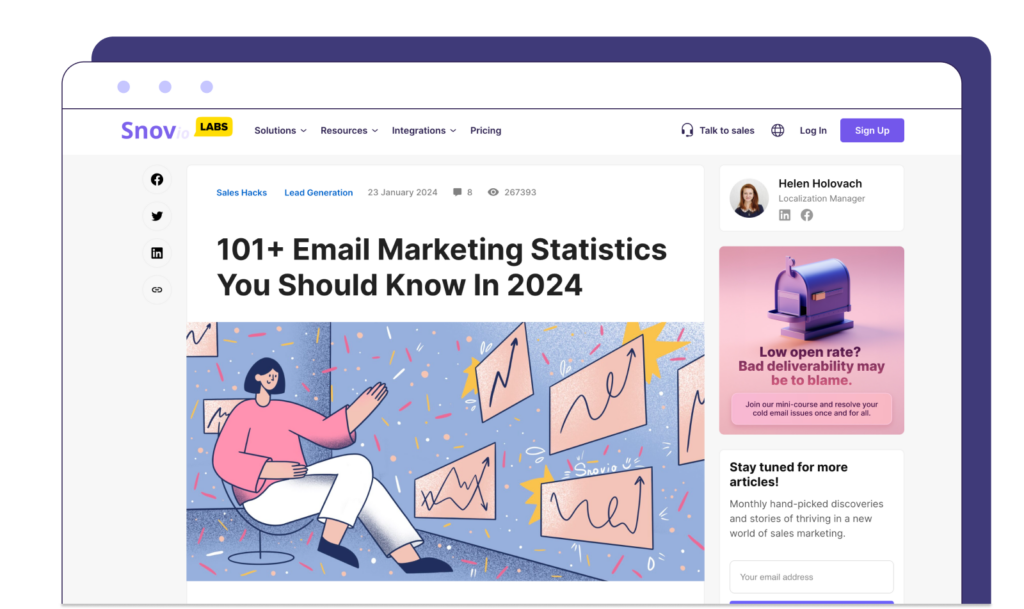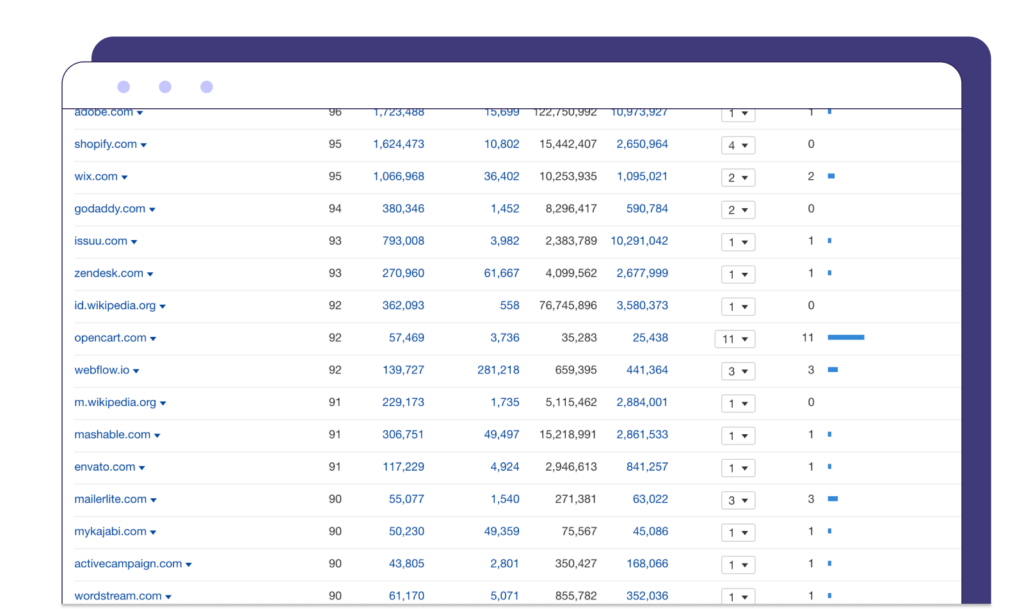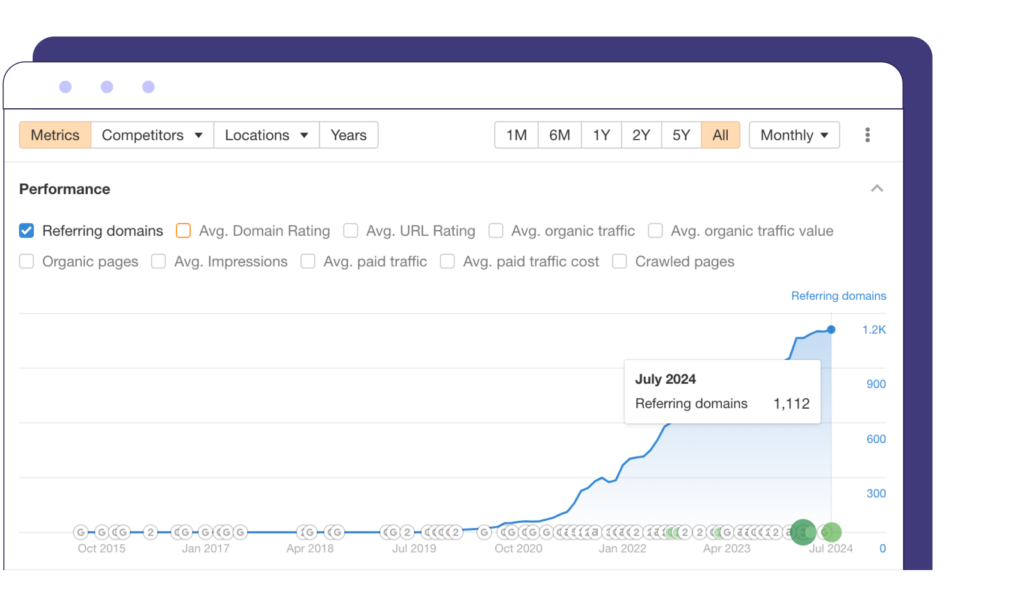Over the past 365 days, I’ve spoken with well over 100+ SaaS marketers. For every one of those conversations, we ask 5 core questions via our Calendly booking form, one of them being the following:
“What are you struggling with the most when it comes to SEO?”
I decided to sit down, crunch, and compile the entire dataset from the past 365 days, and the results are in on the #1 response we get via that booking form before getting on a call with a potential prospect.
Survey says..

“Our SEO efforts aren’t driving results”
A combination of the same core problem said in so many variations and words, but coming back to a few of the core root problems we see over and over again:
Roughly half the time, those are in-house efforts, and the other half via an agency or set of freelancers and contracts – regardless, the same exact problem over and over again.
In this article, I’m going to dive into the top 5 most common reasons why SEO efforts for those companies are not equating to real results (revenue growth) and what you should be doing instead.
If you’re struggling to get real results from your SEO efforts, you’re likely in one (or multiple) of the below camps:
I’m all for creating thought leadership content and promoting it via organic social or paid social means; believe me when I say it. In fact, if you’ve found this article, you likely found it via my LinkedIn profile or via a promoted Thought Leadership ad on LinkedIn.
This is not an SEO content piece that I’d expect we’d be getting any organic eyeballs from, and it’s not meant to be.
By the definition that I most often see in SaaS businesses among marketing teams, thought leadership content is generally not SEO content.
And that’s fine.
Thought leadership content, in most cases, requires promotion and distribution to get eyeballs on.
Thought leadership content has different meanings and is really a mixture of presenting a strong opinion on a piece of content and being an SME and leveraging that position to drive influence in a particular space.

Thought leadership content can be great from the SEO perspective if we can have the right piece of content first to drive the click to our resources center and then drive the user to take a follow-up action to read thought leadership content around a particular subject or problem once we’ve got them on-site.
But generally – creating thought leadership content, crossing our fingers, and saying our prayers it will rank for some long-tail keywords just doesn’t work.
Thought leadership content requires distribution and promotion to get eyeballs.
Without either of those in place, your thought leadership content will be another article lying around on your blog, collecting dust with the dozens (or hundreds) of other posts.
If your goal is to build content to get organic eyeballs, and you want to create thought leadership content that actually ranks and can be found in Google, here’s a better approach:
Build thought leadership content around a primary keyword and topic that searchers are looking for and inject that into the article’s content.
Imagine you’re writing an article for your ICP on how to complete a specific task – a more-than-traditional so-called “how to” article.
Let’s take the example “how to reduce time to hire” as our primary keyword/topic.
Step #1 – Conduct SERP analysis and build a manual content brief.
Want to Dive in Further? Read This: How to Do SERP Analysis & Build a Killer (Manual) Content Brief
Step #2 – Build the structure for your post to infuse thought leadership.
Here’s the format we like to use:
Introduction
How to Reduce Time to Hire
Here’s How We Reduced [Company] Time to Hire by 23%
Here’s How We Can Reduce Time to Hire For Your Organisation
The meat of this article will focus on the “here’s how you do it” section.
This is where you demonstrate your expertise and authority, inject thought leadership into the content, and map it back to actually ranking for a given topic and primary keyword.
Now, you’re capturing everyone who searches for “how to reduce time to hire” and infusing thought leadership into an SEO-driven article rather than simply creating a piece of content with thoughts and without SERP research that likely will not rank or be found in Google’s search results.
Once the searcher and reader start to consume the content, it will be clear to them that it is valuable. In contrast, 95% of the other ranking posts in the search results regurgitate the same basic step-by-step, which is usually useless to the reader.
By now, you’ve probably noticed we’re using this exact strategy throughout this entire article.
This is by far the most common problem I see with SaaS organizations creating content and wondering why they are not getting organic eyeballs (or any eyeballs) on it—the content is not built to rank in search, and it’s not being promoted or distributed.
ReviewsOnMyWebsite provides a platform for businesses to display customer reviews on their websites seamlessly. They solve the core problem of building trust and credibility by enabling businesses to showcase authentic, positive customer feedback directly on their sites.
By merging thought leadership-style content with SEO-driven content, we drove a 62% increase in new user signups YoY.
I’m being extra blunt with this one – but you’ll know immediately if it resonates.
I’d estimate that I look at anywhere between 15 to 20 new SaaS resource sections, blogs, etc., over a week, and 9 times out of 10, the overall content experience for users is sub-optimal.
They generally look something like this:
And the list goes on..
Not only is it sub-optimal from the experience perspective, but it’s also sub-optimal from the SEO side as well.
At Rock The Rankings, we consider that we have two true growth levers when it comes to SEO:
Getting right-fit traffic is usually the easy part, but if we have a sub-par overall user and content experience on-site, it’s going to drastically hurt our chances of a reader taking a next-step micro or macro conversion action.
I’ll even go as far as the basics here—if your content is not legible on larger desktop screens (a very common problem), how do you expect your users to read it, let alone take a next-step action?
Solving for the user and content experience is a huge part of the overall conversion equation, and simply creating content that ranks for conversion-focused keywords and topics is simply not enough.
Fixing a poor content experience comes with two main improvements in mind:
Optimizing the resource/blog landing page, category pages, and article page template is key to creating an exceptional visitor content experience.
These optimizations are merged with best practices from the SEO perspective to create strong internal linking and an exceptional user experience, driving SERP rankings and conversions.
Fixing a poor content experience includes:
Resource/Blog Landing Page
Article Template
All of these factors make up an excellent content experience for readers that engages them in the content and encourages them to take additional actions while reading the content or after finishing reading the content.
If you want to drill into each of these factors, why they’re important, and how to implement them – the following article is for you:
Want to Dive in Further? Read This: How to Design a Revenue-Generating Blog
The above recommendations are exactly what we worked on implementing for Pinecone, helping to upgrade their overall content and user experience and improve the rankings of their existing content base.
As mentioned, restructuring our article template was also crucial in order to have a strong impact on SERP rankings, as well as to drive impact when it comes to signups directly from solution-aware focused content pieces:
The performance impact is clear based on their strong increase in both referring domains, as well as the performance jump of organic positions on the resources hub post content experience upgrade:
Many companies think they’re doing SEO and building SEO-focused content – but that’s simply not the case.
Creating content briefs using your favorite AI tool (and, even worse, using ChatGPT to create the content) is not a real SEO strategy.
Without proper (human) SERP analysis, you’re going to run into issues with:
The content creation process must begin with introducing a content brief for a given primary keyword and topic that defines the structure and skeleton for the article to be created.
If you don’t meet the SERP intent or Google’s intent for the page type preference based on the SERPs, you will create yet another piece of content that gets zero organic eyeballs.
The most common scenario in this problem is a company that has created hundreds or thousands of articles that have no to minimal traction—articles that simply cannibalize each other and shoot you in the foot when it comes to getting meaningful search traffic:
Notice how each page is trying to compete for the core term based on the SERP position graph – over 20+ pages are trying to rank for this single term. Hence, every page basically competes with another, causing instability in rankings and the inability to rank in the top positions of the SERPs.
Another common problem is not matching SERP intent or user intent for a given query.
Imagine we want to create a piece of content for the term “identity resolution”.
The search results will dictate the intent of the query:
The SERP intent here is building an article that goes deep into the topic around defining what it is, meaning an informational piece of content.
10 out of 10 articles on the first page all match this intent, meaning the SERPs are pretty much defined in this case.
If we attempt here to build a landing page to rank for this term, it will realistically have zero shot of ranking. Additionally, if we build an article that compares competitors or covers another topic that does not meet this intent, it will not rank.
Additionally, if we attempt to create multiple articles around this subject, there’s really only one single page type ranking for this and all related queries.
Creating 5-10 different articles for SEO purposes makes no sense here, as only one article is required, and it is the only search result Google provides for all related terms.
Understanding every topic you’re trying to rank for at the granular level and conducting proper SERP research beforehand is crucial. Otherwise, you’ll likely be spinning your wheels and creating content that you think is “SEO content” that will rank, but it won’t.
Building an SEO-driven content strategy that drives real revenue impact is focused on:
Most companies skip over the first step and jump straight into creating content – and that’s the core failure point.
Want to Dive in Further? Read This: How to Attack and Rank for BOFU Solution-Aware Keywords
If you’re building a content strategy to create content that can be found in search rankings, you need strong research-backed outlines to guide your content team.
Additionally, you want to be focused (assuming you can rank) on building content for your solution-aware audience and start with building the landing pages and articles you need that will result in driving demos and conversions rather than focusing too high in the funnel and creating content simply that gets traffic, and has minimal impact on the conversion side.
Toast POS is a cloud-based restaurant management system that streamlines operations by integrating point of sale, digital ordering, and employee management tools. They solve the core problem of inefficiency and disorganization in restaurant operations, helping businesses improve service speed, accuracy, and overall customer satisfaction.
By building an SEO-driven content strategy, we were able to help Toast add an additional +200% organic traffic increase for BOFU + MOFU traffic.
Short and sweet – In some cases, SEO might not be a right fit outside of a few focused queries and owning branded search – and that’s fine and normal.
Often, this can be the case with category creators, who simply do not have much to bite into when building content to rank in Google’s search results.
For our team, if we don’t have significant queries to rank for (again, based on Google’s SERPs) that are category terms for the solution-aware audience, we’d likely recommend against investing any time, money, or resources into SEO.
From the start of an engagement, we go after solution-aware terms and problem/pain long-tail queries, and if these don’t exist, well, they simply don’t exist.
Other channels, such as leveraging LinkedIn organically or paid, to educate your audience that a solution exists for their pain or problem are the routes to take.
Again, if SEO is not a channel to leverage in your overall marketing strategy, it is completely fine. Focus your time and efforts on leveraging other channels that can help drive revenue growth.
This is probably the easiest to comprehend on the list, yet the hardest to execute.
There’s no doubt about it – backlinks and your backlink profile have mattered for decades and still matter just as much if not more, than they did a decade ago.
If you have a weak link profile and you’re trying to rank for competitive terms, you’re likely dead in the water in most cases.
There are ways to fight through this when it comes to hyper-focusing on a singular core topic and building deep topical relevance—but most SaaS products typically span across multiple topics and multiple content silos when it comes down to their product feature set.
Staying so hyper-focused, generally, isn’t an option, nor does it make sense on the content side.
When we build out proposals for clients, we drill into the forecasting side in order to know:
If your link profile is weaker than most of the domains competing for your core conversion terms, you’re going to need to do some shape and form of link building to your homepage and your core conversion pages in order to get them to rank in top positions – period.
There are many methods and ways to build links.
Our go-to approach is to leverage natural link-building methods, which means building awesome resources that naturally pick up backlinks as they rank.
This includes:
Our favorite, though, and one that scales nicely, is focusing on building out content pieces that help to naturally attract links by honing in on key statistics relevant to your industry.
Want to Dive in Further? Read This: Link Building for SaaS: 17 Tried-and-Tested Methods + Examples
Here’s how it works:
Compile a list of relevant statistics or trends for your audience, and rank it.
Now, think about it for a second.
When someone uses Google to search for “LinkedIn user statistics” or “email marketing statistics”, what are they most likely looking to actually do with the content listed in those search results?
In many cases, writers and journalists are looking for sources to cite for a story or piece of content they’re building.
Now, here’s where you come in.
You build the highest-quality content on that topic by compiling a list from reputable sources, including custom visuals and graphics (don’t skip this part), and work to promote and distribute it via your social and your website.
If it’s a truly a killer piece? Watch the links come rolling in.
The best part?
You don’t need to run your own internal analysis or build a unique statistics dataset from your user base (although you can, which creates an even stronger resource).
By simply compiling a list of statistics from third-party, reputable sources, you’re removing a lot of work for the journalist or writer looking for a set of statistics on the given industry or topic—making YOU the source that is getting linked to.
How do you do it?
Assets like these will continue to gain links over time, creating a snowball effect. They are a much more effective way to build links than outreach-based link building or simply paying top dollar via paid link acquisition.
Snov.io is a comprehensive sales and marketing automation platform that offers tools for lead generation, email verification, and email outreach. They solve the core pain of finding and verifying quality leads and streamlining email outreach to enhance sales efficiency and effectiveness.
Snov.io is a perfect example of natural-based link-building leveraging statistical content.
Their article on “101+ Email Marketing Statistics You Should Know in 2024” has driven over 1k+ referring domains over the past 36-month period:

Each and every month, they continue to pick up high-quality links simply by having created an excellent linkable resource, gather links from:
And the list goes on…

This page continues to build backlinks for Snov.io on auto-pilot and helps them to rank for solution-aware terms in a very competitive space.

These are the core 5 problems we consistently see regarding why SEO efforts aren’t working – with the resolution on how to resolve each one.
One of these may have resonated with you, or perhaps even more than one, and that’s likely what is holding back your overall SEO efforts from having a meaningful revenue impact.
Feeling stuck and need help unlocking your real growth potential? Read the above, but I’m still not entirely sure what exactly is causing your inability to drive right-fit inbound from search? Book an introduction call below, and we’ll help you pinpoint the problem area(s) and the resolution you need to put in place to start driving real conversion and revenue impact from your SEO efforts.
Founder of Rock The Rankings, an SEO partner that helps B2B SaaS brands crush their organic growth goals. An avid fan of tennis, and growing micro-SaaS businesses on the weekend. 2x SaaS Co-Founder – Currently working to build and scale Simple Testimonial.
Book a 1-on-1 call with our founder and walk away with a custom plan built for your business. Growth starts now.
BOOK INTRO CALL